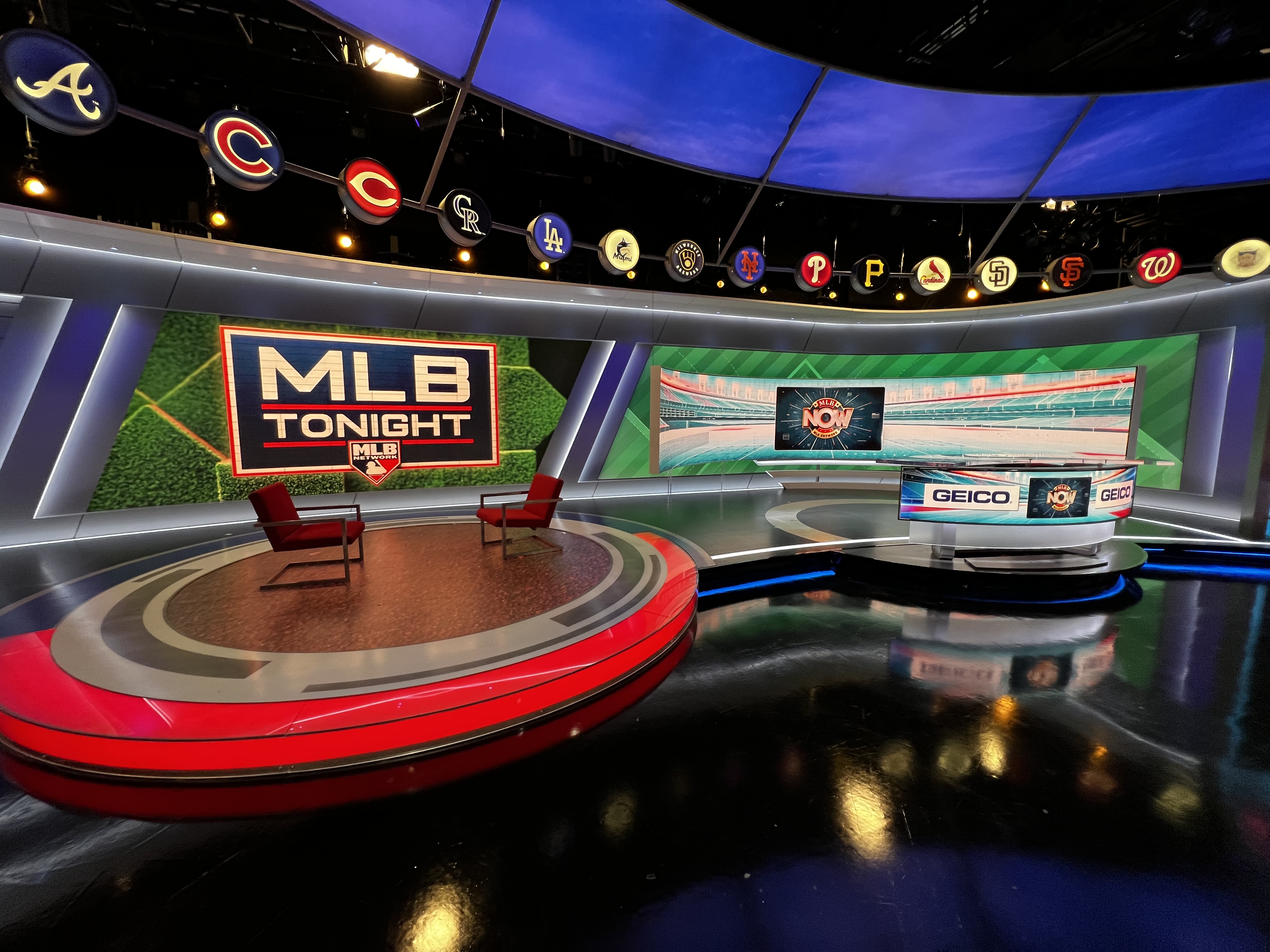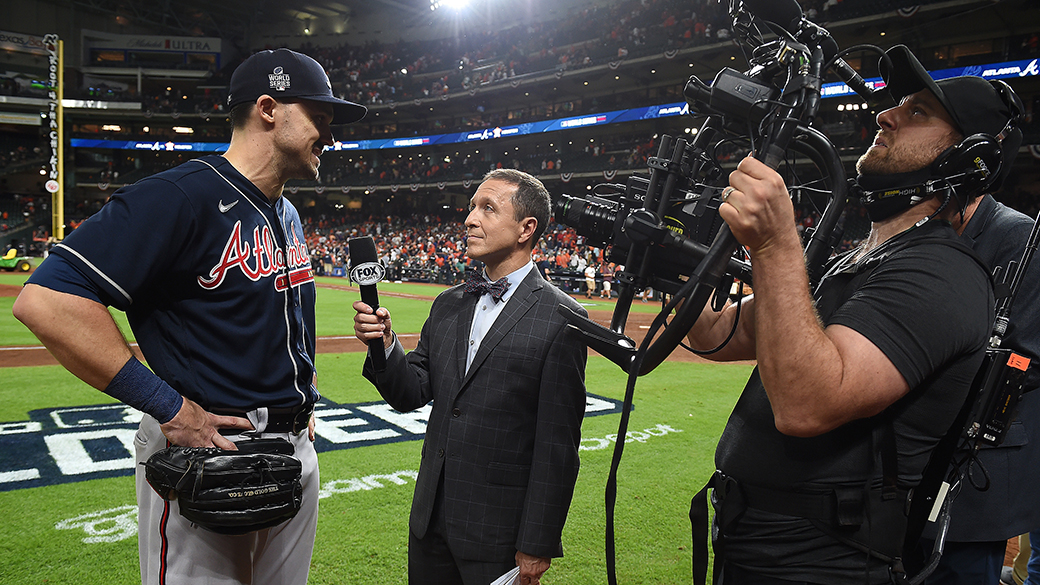Baseball is Back!
Networks upgrade tech; Is Apple TV+ deal a harbinger for things to come?

BALTIMORE—After a contentious, months-long lockout between its players and owners, Major League Baseball got back in the game last month with a new agreement. On the heels of that announcement came news of a new player in the 2022 lineup that’s joining MLB Network, Fox Sports and ESPN: Apple TV+.

The deal between MLB and Apple TV+ is the latest extension of what’s been happening in other sports leagues, such as ESPN exclusively carrying selected NHL games on ESPN+; it calls for Apple TV+ to carry two Friday night games under a similar arrangement.
While the reportedly $85 million, seven-year deal was light on details, it led to more discussion about how viewers consume live sports, and just how Apple will present the games. Will it create its own infrastructure, with broadcast and production crews? Or stream via mlb.com?
The economics suggest that the overall setup may soon include a variety of sports programming. Today, however, all involved are just happy to see the 2022 season get underway.
Leading Off
As the lockout ended, MLB Network was preparing to roll out a key update at its headquarters in Secaucus, N.J.: the refresh of Studio 3, so named for George Herman “Babe” Ruth.
“Studio 3 has been a workhorse for us,” said Susan Stone, senior vice president, operations/engineering for MLB Network. “It has seven distinct areas, including a spot for social media that we’ve turned into a demo area.”
That demo area, dubbed the “On Deck Circle,” features a 2.6mm LED floor in an appropriate 12-foot radius, with SemiLumen floor tiles and interactive touch capability. “It can present moving video, sponsor signage,” said Stone, “or anything we want.”
The professional video industry's #1 source for news, trends and product and tech information. Sign up below.
Other parts of the update include a media wall, dubbed “the Backstop,” which measures 23x13 feet, with 1.8mm SemiLumen tiles. Other new features include a curved 1.9mm LED wall, called (of course) “the Curve,” which measures a whopping 30x11 feet; and a new second news desk fronted by a curved 2x9-foot LED screen. The latter two displays are flexible.
The engines for the four new screens in Studio 3 are revved by Avid’s Maestro 4K system. The additions were created by New York-based Clickspring Design and built by Dimensional Worldwide with equipment from GrantAV.
In addition to Studio 3, MLB Network will continue to work with its colleagues at the Office of the the Commissioner on expanded use of Statcast 3D, which analyzes player movements and athletic abilities; and FieldVision, which uses tracking data and transforms it into a 3D experience.
Coming Soon
So, how did Fox Sports monitor if and/or when the 2022 season was going to start, and how it will start getting set up at the various MLB ballparks?
“We didn’t really know what our schedule was going to look like if/when the players came back,” said Michael Davies, senior vice president, field and technical operations for Fox Sports. Still, “As we’ve worked on the tent poles [for the All-Star and Field of Dreams games], this preparation did not stop and kept its pace.”

Concerning new ways to capture content, which the major networks often present during signature events, Davies was noncommittal. He did, however, hint at new approaches.
“It’s too early to tell,” he said. “We’ve done a lot of innovation with our dirt cams and mic-ing of players,” he said. “I think that the All-Star Game will, once again, be all about access. We do have some new things in store for the ‘Field of Dreams,’ but I don’t think we’ll be unveiling them until later.
“What I will say,” said Davies, “is that we’ll double down on drones, cinema cameras and all of the things that made the ‘Field of Dreams’ game special last year.”
Back to School
Phil Orlins, vice president, production for ESPN, said the network’s innovation is “directed more toward MLB, with some also directed toward college” and that new technology “has more to do with information, data, screen layout,” etc., “as they are with cameras.”
Meg Aronowitz, vice president, noting that the network carries 2,000 college baseball and softball games every season, elaborated about ESPN’s extensive schedule. The hubs for its productions are the control rooms, with the spokes the fiber connections to the network’s facilities in Bristol, Conn.; Charlotte, N.C.; and The Woodlands (Houston).
As for the tech setup required when various conferences and many colleges are involved, Aronowitz discussed “The School Project,” which consists of 29 Southeast Conference (SEC) and Atlantic Coast Conference (ACC) institutions that operate and staff their own control rooms as ESPN’s partners. “That’s where the bulk of our programming originates.”
Typical game coverage consists of five-camera coverage, with operators stationed at the traditional spots: high home, high first, centerfield, low first and low third (compared to seven or eight locations for a typical MLB regional sports net presentation), with the cameras of choice being Sony 1500s to 2500s (and perhaps 4300s for super slo-mo), and various Ikegamis and Canon lenses.
“We throw more resources at the bigger games,” she said, noting that the equipment roster is most often rounded out with Ross Xpressions for graphics, Evertz DreamCatcher replay systems and routers, and Clear-Com and Riedel for comms.
Telling Stories
Still, control room technology “can vary depending on the school, but most are multi-million dollar facilities equipped for major network productions,” Aronowitz said. For SEC and ACC broadcasts, trucks aren’t needed, but can be on other occasions. “That’s when a truck would be brought in from NEP, Game Creek or F&F. Or there could be a REMI setup when the network only does camera feeds or maybe just a sprinter van,” she said.
While college baseball is decidedly a lower-budget affair, there are still many similarities with MLB broadcasts, Aronowitz added.
That said, the college game also offers greater possibilities: ESPN just aired a softball tournament in Florida that included 40 games, with four games from four fields often aired simultaneously, with 20 on the various ESPN networks; the other half streamed via ESPN+.
“We didn’t have that option pre-ESPN+,” Aronowitz said. “We feel that there are a thousand ways to tell a story. Between Phil and I, we make the best decisions with the resources we have to get as many games on the air as possible.”
Fox Sports' Michael Davies will discuss the network's live production strategies during the panel "New Life for Live Production Tech" at the TV Tech Summit, March 31.
Mark R. Smith has covered the media industry for a variety of industry publications, with his articles for TV Technology often focusing on sports. He’s written numerous stories about all of the major U.S. sports leagues.
Based in the Baltimore-Washington area, the byline of Smith, who has also served as the long-time editor-in-chief for The Business Monthly, Columbia, Md., initially appeared in TV Technology and in another Futurenet publication, Mix, in the late ’90s. His work has also appeared in numerous other publications.

